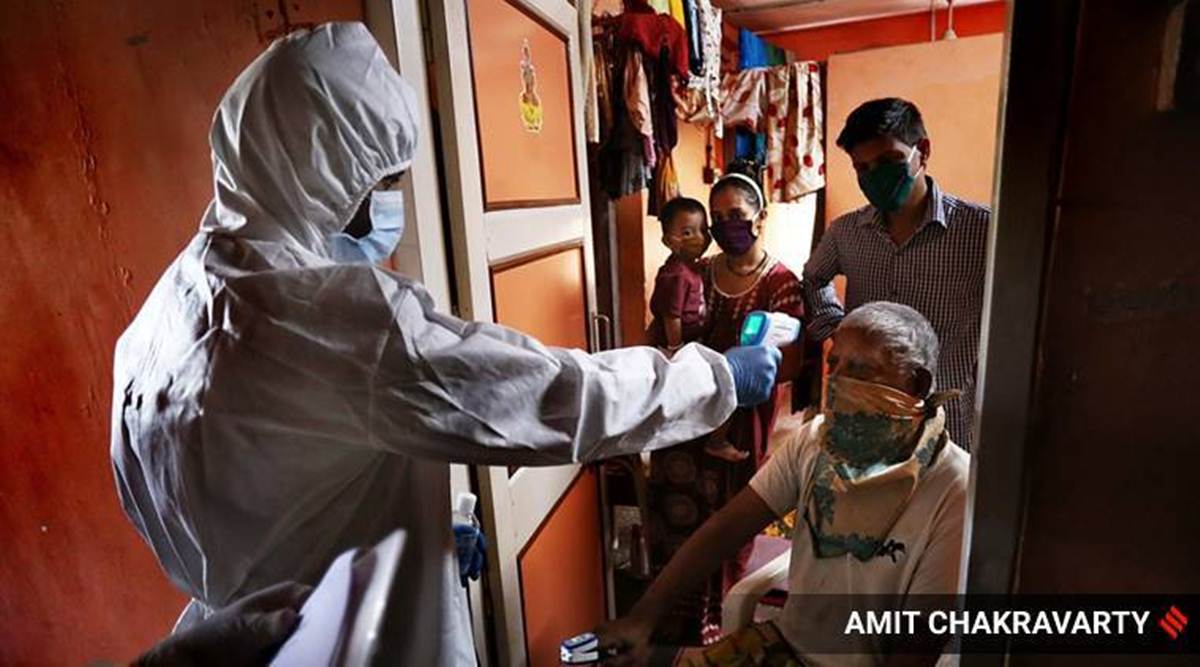 Some economists worry that the impact of the unfolding second wave, with stringent lockdowns in several states, will likely be higher than the last time around.
Some economists worry that the impact of the unfolding second wave, with stringent lockdowns in several states, will likely be higher than the last time around. THE DEEPENING of fear in the countryside with the rapid spread of Covid-19 in rural areas is likely to further delay the recovery of the services sectors. Some economists hence worry that the impact of the unfolding second wave, with stringent lockdowns in several states, will likely be higher than the last time around.
The fear is expected to impact the rural economy in two distinct ways: i) Supply chain disruptions at the primary mandi level may dampen the multiplier impact of a good harvest this year following forecast of a normal monsoon, raising the spectre of high food inflation ii) The rural job guarantee programme (MGNREGA) which was a significant and effective intervention last year in delivering income support in the rural areas, could be under question this year. This dims the prospects of firm demand in rural consumption.
On the other hand, in urban areas, the pent-up demand for consumer goods — a major contributor to the pick-up in consumption in the second half of 2020-21 — is unlikely to be a factor this year, further denting the growth prospects.
Unlike in the first wave, when movement of food produce from the primary rural mandis to the urban mandi was disrupted to some extent, this time there are question marks over the produce reaching the primary mandi itself. “If people are fearful, the effect of a good harvest may not play out because the rest of rural India will not be prepared for it… This time disruption can happen at the village level itself… what you may actually see is a shortage that can develop particularly in agricultural commodities, simply because of supply chain disruptions, beginning at a much earlier stage. So I would worry a bit about food inflation,” Pronab Sen, former Chief Statistician of India and Country Director for the India Programme of the International Growth Centre, said.
Second wave versus first
What distinguishes the second Covid-19 wave from the first is its rapid rural spread. This is likely to disrupt supply chains at the village level. MGNREGA may not be as effective since high case load may prompt a pause in work orders.
With already elevated global food prices, the possibility of India having to engage in food imports would create disruptions in global markets. “We’re not the only country facing this problem… in developing countries, where you have dispersed agricultural production, like ours, this is a problem…I don’t know what kind of expectations we should keep. We are just too large… food import is a possibility. But think of the situation where in any case global food prices are up. Now, if India needs to import substantial amounts of food, think about what it’s going to do to the global food market. It’s not a happy thought,” Sen said.
Given the devastating impact of the second Covid wave, India’s GDP growth estimates for the current year are set to be progressively recalibrated downwards, but the scarring in the economy is likely to be much more than during the first wave. The two major differentiators impeding economic activity are the fear factor and the level of uncertainty over the current wave of lockdowns.
The establishment of MGNREGA sites, a major intervention last year, is unlikely to be effective this year given the spread of the disease. Plus, the ostracisation of families that have the disease could break the community support network in villages, leading to greater distress. Affected families would fall below the poverty line if a disease were to happen in the household. As a result, rural consumption — a big saviour last year — could be adversely impacted this year.
Much of the pick-up in consumption in the second half of 2020-21 was on account of the pent-up demand for consumer goods. This year, that’s ruled out entirely. Plus, household savings are only likely to increase, given the uncertainties over a third wave. “Last year, everything was shut down for two-and-a-half months. There was a lot of pent-up demand when things opened up. This time, the real worry is that given the uncertainty and the fear, instead of pent-up demand, people will actually save back on consumption,” Sen said.
A recent Ecowrap report by the State Bank of India’s economic research division point out that the share of rural districts in new cases has increased to 48.5 per cent in May compared with 36.8 per cent in March. It further said the monthly leading indicators, including GST e-way bills, vehicle sales and fertiliser sales have declined in April 2021 compared with March 2021. “Given the rise in cases and restrictions imposed in every state, read GDP growth of 10.4 per cent looked a bit ambitious…Regarding the question if the pent demand would support economic activity once the restrictions are removed, we believe recovery will actually depend on the psyche of people to come out and this will not happen till the larger population is vaccinated,” it said.
Fitch group company India Ratings, however, said the second wave of Covid-19 infections will be “less disruptive” than the first wave for the business environment as corporates are “better prepared”, but the recovery paths of certain sectors especially those linked to services and social distancing could stretch beyond 2021-22. “…the first order impact on corporates would be minimal to modest depending on the industry and size of entities… corporates are better prepared to operate under localised lockdown conditions while adhering to various guidelines,” it said.
- The Indian Express website has been rated GREEN for its credibility and trustworthiness by Newsguard, a global service that rates news sources for their journalistic standards.

